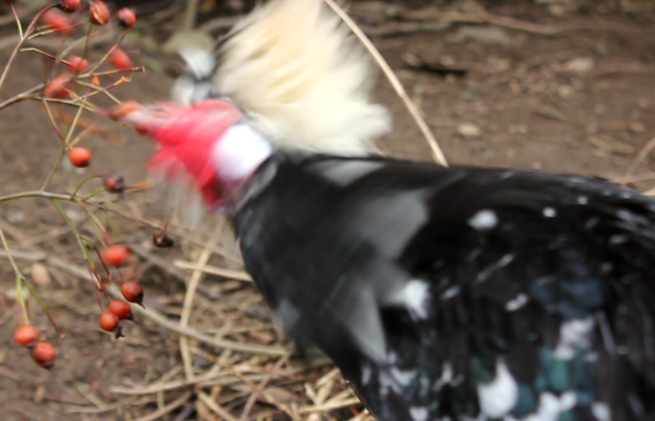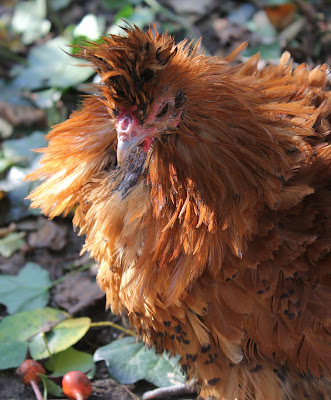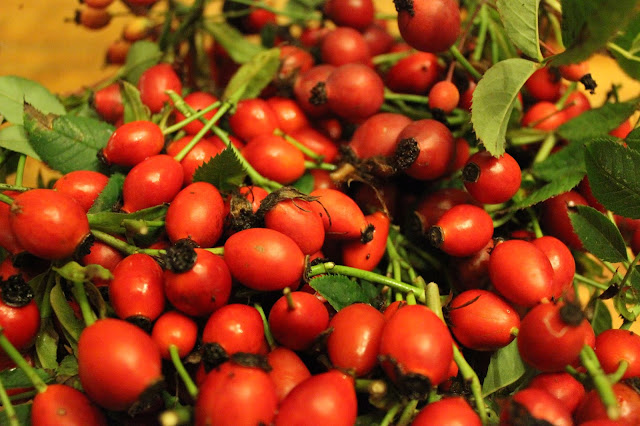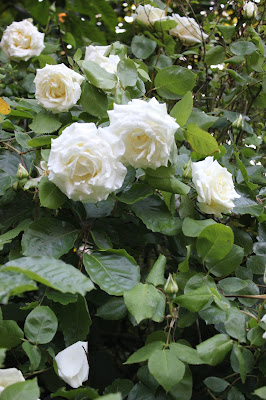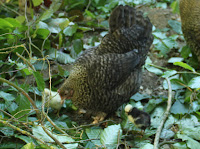For thousands of years the rose, hips, leaves and blossoms have been used as medicinals for both physical and nervous system ailments. The Ancient Egyptians used them in funeral rites and the Romans had over 30 medical conditions they treated with them. Hunter gatherers used the hips as valuable Winter food and the early monasteries and apothecaries valued all parts of the rose for its medical and spiritual value. Even during the inter and post war periods when the World was drawn into a love affair with 'science' and chemical-based medicine, the public's romance with roses continued to flourish, with inner and outer beauty treatments such as rose hip moisturising oils, rosewater perfumes and teas.
In the last few decades however, witness the rise in the popularity of health visionaries such as Hildegard von Bingen (1098 - 1179), the use of roses both in medicine and cuisine has bounced back into the human psyche.
As you can see from the above, Hildegard was not just referring to the flower, when in bloom, as the most beautiful medicinal, for the rose reveals her beauty and maintains her rich nutritive virtues throughout the year. Here below is Ringo Bingo, our mottled Polish, in action, demonstrating the particular twisting motion he uses to achieve his prize. Notice how he removes the whole fruit, which he then consumes in its entirety, despite the seeds being 'hairy' and an irritant but he obviously knows something about their value!
The present supplies of the syrup are the result of a campaign organized last summer and autumn by the Ministry of Health and the Department of Health for Scotland for collecting rose hips. School teachers, boy scouts, girl guides, the W.V.S., women’s rural institutions, and other voluntary organizations co-operated, and some 200 tons, equivalent to 134,000,000 hips, were collected. The hips were converted into syrup by selected firms, and their total output amounts to 600,000 bottles. A teaspoonful of rose hip syrup a day will supply half the vitamin C needs of a child. It can be taken neat or diluted with water, and has a pleasant flavour. Plans are being made for another collection of rose hips on a national scale this year.
However it wasn't until very recently that the Poultry Industry via academia has turned towards the rose and in particular rose hips to replace chemical antibiotics as both a growth promoter and antimicrobial. For this reason, therefore and unlike with most of my researches to support my observations, it has been relatively easy for me to find the nutritional and hence medicinal value of the fruits of the rose and her leaves.
Rose hips - nutritional value:
Vitamins
Vitamin C - Rose hips are the richest natural source of this vitamin. The content of rose hips ranges from 300 to 4000 mg/100 g, with the variation in amounts resulting from changes in the levels of sugar during ripening.
However the rose hip also contains:
Vitamin A – significant amounts of the precursor beta-carotene so an excellent Winter replacement for the lack of grass and other vegetation which usually supplies this need.
Goodly amounts of:
Vitamin E
Vitamin K
Lesser but useful amounts of:
Vitamin B₂ Riboflavin
Vitamin B₃ Niacin
Vitamin B₅ Pantothenic Acid
Vitamin B₆ P5P aka pyridoxal-5-phosphate
Minerals
Manganese is the richest mineral available in rose hipswith in lesser and joint second place:
Calcium in a
particularly bioavailable form and
Magnesium
and then in small but useful amounts:
Potassium
Copper
Iron
Phosphorus
Above left 'The Red Rose' Botanicum medicinale : an herbal of medicinal plants on the College of Physicians list by Timothy Sheldrake p. 1768
Phytochemicals
Rose leaves - nutritional value:
Vitamins
Vitamin B₁ - Thiamine
Vitamin B₂ Riboflavin
Vitamin B₃ Niacin
Vitamin B₅ Pantothenic Acid
Vitamin E
Minerals
Iron is the
richest mineral available in rose leaves with in second place:
Potassium
Useful amounts of:
Manganese
Zinc
Calcium - in a particularly bioavailable form
Copper
and a little:
Magnesium
Phytochemicals
A valuable source of flavonoids, especially flavone glycosides
Until next time, all the very best from sunny Normandie!
Sue
Thanks to Pinterest:
Rose hip gatherers - recipespastandpresent
Delrosa ad - Ebay UK
© 2021 Sue Cross
RELATED ARTICLES
Part 6 dealt in detail with the nutrient value and here we look in depth at why these are crucial for optimal physical and nervous system health...read more
Rose Hip Syrup Forest Garden Good Health
Rose Hip Syrup Part Two - Drink Recipes
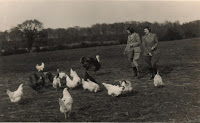
Food for Free. Fabulous Forage Part 1 Grass
Food for Free. Fabulous Forage Part 2 Chickweed
Food for Free. Fabulous Forage Part 3 Tree Fodder & Tree Hay
The idea of tree fodder is inextricably linked with the changing landscape, the full domestication of animals, the concept of farming and the clearance of the forests... read more




